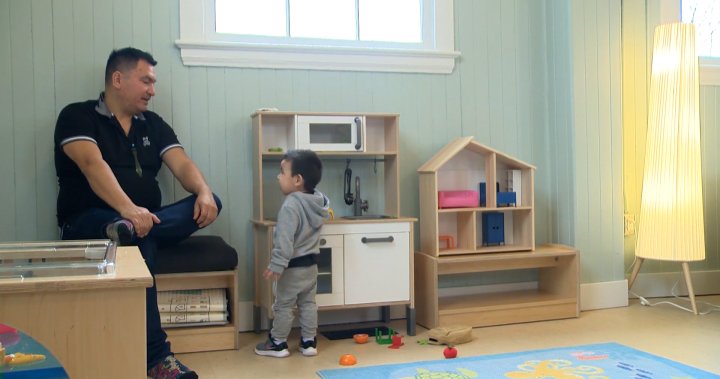“It’s like a bullet. You hear cancer and you just go blank.”
After visits to three different doctors, a misdiagnosis, and numerous tests, Sandra Hajlo of Winnipeg Beach learned the source of the debilitating back pain that had plagued her for months.
“I just assumed it was job-related, or that I was getting older,” the 59-year-old said.
“It was my worst fear.”
Hajlo was diagnosed with stage four B-cell lymphoma in 2015. She immediately began chemotherapy in Winnipeg. After six months, fist-sized tumor had disappeared, and she was declared cancer-free.
But eight years later, the pain returned. Hajlo said her doctor believed she was suffering from scoliosis, but ordered a CT scan “just to confirm.”
“When I got those results back… it was stage four cancer again,” she said through tears. “It was inconceivable at the time, because I thought I had already survived it. Why me?”
She began chemotherapy at CancerCare Manitoba once again. But then, her oncologist approached her about a different kind of treatment.
Hajlo met the criteria to undergo chimeric antigen receptor, or CAR T-cell therapy. She would be the first person treated with this therapy by CancerCare Manitoba.
“When we’ve identified that someone is an appropriate person for this type of therapy, as Sandra was, the next step along the way is to actually manufacture, or produce, the CAR T-cells that we’re talking about,” said Dr. David Szwajcer, Manitoba Blood & Marrow Transplant Director with CancerCare Manitoba.
The cells were collected and then sent to a manufacturing facility; Szwajcer says there are a handful in the U.S. The cells are then modified to be attracted to cancer cells. Once the product is ready, it is frozen and shipped back to Winnipeg. The cells are then re-introduced to the patient in a way Szwajcer likens to a blood transfusion.
The latest health and medical news
emailed to you every Sunday.
Hajlo says this last step was surprisingly simple.
“It was effortless,” said Hajlo. “Within 20 minutes, they said, ‘OK, the procedure is done.’”
But the treatment doesn’t guarantee a patient’s survival. Szwajcer says about half of patients don’t respond to the therapy.
“There are, unfortunately, people that will progress with their underlying lymphoid proliferative disorder, and that will become apparent reasonably shortly after,” he said.
But in other patients, the treatment can save their life.
“You have a group of patients who, historically, would not have been cured of their disorder, who appear to be in remission in the several years after the procedure,” he said. “And we think there’s a proportion of those people who are definitely cured of their cancer.”
“That’s really changing the paradigm in the treatment of this type of disorder.”
Szwajcer says the therapy is expensive, and oncologists follow strict criteria to determine who is eligible, but there’s hope in his department that Manitoba could get its own T-cell manufacturing facility.
“Our hope is to be able to develop the capacity to undertake point of care manufacturing, where our centre would produce CAR T therapy for the patients that we follow in our program, and for other centres,” he said.
Szwajcer says as the technology advances, more and more people will be eligible for this type of treatment – and that determining who is eligible raises questions as to what the goal of treating cancer is.
“In the cancer setting, we know that not always is the intent of CAR T treatment to be curative,” he said. “There are evolving reasons to give CAR T therapy where the goal is prolongation of life, rather than a cure.”
“I’m one minute closer to death than I was a minute ago. And that’s true of all of us,” he said.
“I’m not able to cure everybody, and the treatment team I’m looking after are not able to cure everybody. And I don’t think my goal necessarily is to cure people, but to provide them with the best care that I can, and to make sure that they and their families are supported through their illness.”
For patients like Hajlo, that care meant a second chance at life. After receiving CAR T-cell therapy in December 2023, she learned Wednesday that the treatment worked, and that she is cancer-free for a second time.
“I know in my heart that the treatment was successful and I owe it all to my medical team,” she said.
© 2024 Global News, a division of Corus Entertainment Inc.





